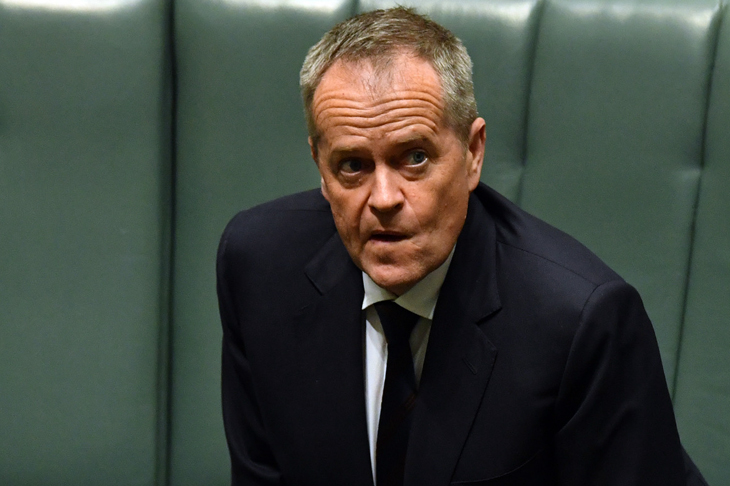The attempt by the government to rein in the burgeoning National Disability Insurance Scheme is overdue and welcome. A decade after its launch in 2013, the NDIS is on track to fund more than double the number of participants originally forecast and to cost 3 to 4 times first projections. When launched it was estimated to fund some 411,000 people at a cost of less than $20 billion. Today, there are some 600,000 participants, a figure the scheme’s actuary projects will increase to over a million people by the early-2030s. And the cost has now reached $34 billion. The March 2023 report to the disability ministers projected that the total cost could rise to over $89 billion in 2031-32. How this escalation has occurred and what to do about it is one of the most pressing public policy issues facing Australia.
The NDIS was the consequence of a Productivity Commission report and a successful advocacy campaign. Employing the slogan ‘Every Australian counts’, the campaign resulted in the rushed introduction of the scheme by the Gillard government in 2013. The pace of the rollout – described from time to time as ‘building the aircraft while taking off’ – and the requirement by the states and territories to limit their contributions, effectively leaving the Australian government largely responsible for an escalation of costs, are both factors in the problems now bedevilling the scheme.
Many of the issues troubling the scheme today are a consequence of departing from the commission’s 2011 proposals. Two, in particular, are significant: the provision of three tiers of support; and the use of independent assessments.
The Productivity Commission report envisaged three tiers of disability support. Tier 1 embraced all Australians. ‘The NDIS is for all Australians since it would provide insurance against the costs of support in the event that they, or a family member, acquire a significant disability.’
The second tier would provide information and referrals to other services, as distinct from directly funded support. The commission envisaged that the potential ‘customers’ comprising this group ‘would be very high, but the overall costs would be small’.Importantly, ‘all governments would continue to support a range of community and carer support services, including some existing or modified Home and Community Care services, for people with lower level or shorter-term disabilities’.
Tier 3 was designed to target ‘the much smaller group of people with significant care and support needs’ while not displacing ‘the role of the family and the community in engaging and supporting people with disabilities where people’s needs are smaller or best met in ways other than taxpayer funding’. Nor would the scheme ‘cover people whose requirements for support would most appropriately be met by other systems’.
Significantly, the Commission excluded certain groups from the proposed scheme including people acquiring new catastrophic injuries for which the publicly funded healthcare system was best suited; people acquiring a disability after age pension age; and a group of people with periodic disability.
The commission estimated about 330,000 people with ‘significantly reduced functioning in self-care, communication, mobility or self-management and require significant ongoing support’. It also estimated an early intervention group of around 80,000 people. ‘This would encompass people for whom there was good evidence that the intervention would be safe, significantly improve outcomes and would be cost-effective’.
There would also be a third group difficult to otherwise categorise. Significantly, it warned that ‘the NDIS would apply this third criterion judiciously rather than routinely. It would be constrained by guidelines and monitored rigorously for its effects on scheme costs. If the Agency was to use this criterion loosely, it could pose a risk to the overall financial sustainability of the scheme’. Finally, the commission proposed ‘some funding would be available to carers who were under great strain and needed some support’.
It is clear that the commission proposed a scheme in which most people with a disability received support under Tier 2, with a smaller, confined group of about 400,000 to 500,000 on Tier 3 support. These were people who required long-term care and support. Nor did the Productivity Commission envision so many children on Tier 3 support.
The commission recommended the use of independent assessments, stressing that they should be as objective as possible.
A recent review paper outlined five key challenges facing the NDIS. According to the paper, the NDIS has become ‘an oasis in a desert’, noting that ‘community supports for all people with disability, as originally proposed, have not been delivered. This has had a significant impact on the cost of the scheme. It has also left people who are not in the NDIS without support’.
Secondly, noting that the NDIS funds ‘reasonable and necessary’ supports, it observes that this expression is poorly defined. ‘This unresolved issue is the cause of many of the scheme’s challenges – including stressful, time-consuming and poor planning experiences, inconsistent and inequitable decisions about funding and disputes between participants and the Agency.’
In addition, many more young children are entering the scheme than was expected, and the markets in the NDIS have not worked as originally imagined. Workforce quality, training, and retention are also major issues.
Finally, it notes that the NDIS is an uncapped, needs-based scheme. ‘However, the NDIS must also be sustainable and its costs predictable for governments and the public. It also must provide certainty for participants and their families.’
In April 2023, the national cabinet approved a financial sustainability framework to reduce annual growth per participant to no more than 8 per cent by July 2026. This involves a reduction from the then 14 per cent!
One of the biggest challenges is the larger number of children entering the scheme. Estimated originally at about 80,000, they now number some 313,000 – about half of all participants. There is a perverse incentive for parents to get their children into the scheme, as their is very little assistance otherwise.
With few Tier 2 supports, parents are paying thousands of dollars to have their children assessed in order to qualify for Tier 3
A changed approach was proposed by the Actuaries Institute in its submission to the review: Children with autism would have better long-term outcomes in school and community-based programs outside the NDIS than receiving individual supports under it.
The NDIS is based on what is ‘reasonable and necessary’ to provide long-term care and support for the individuals who require it. The extent of this provision must be clarified, otherwise the costs will continue to escalate, placing in doubt the ability of future governments to fund the NDIS.
Got something to add? Join the discussion and comment below.
Get 10 issues for just $10
Subscribe to The Spectator Australia today for the next 10 magazine issues, plus full online access, for just $10.
You might disagree with half of it, but you’ll enjoy reading all of it. Try your first month for free, then just $2 a week for the remainder of your first year.














Comments
Don't miss out
Join the conversation with other Spectator Australia readers. Subscribe to leave a comment.
SUBSCRIBEAlready a subscriber? Log in